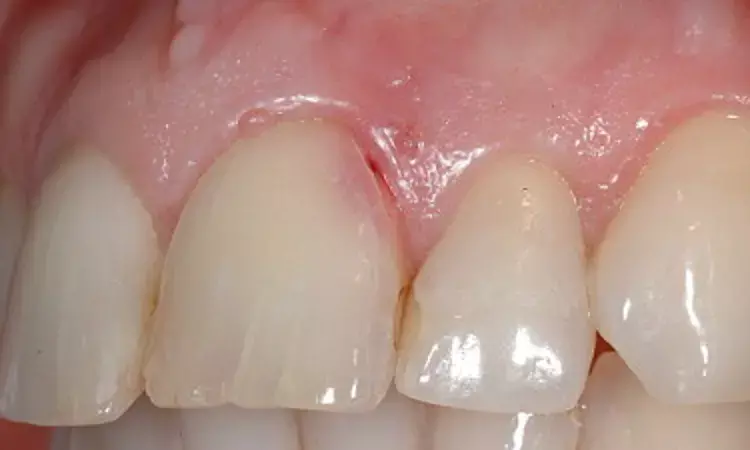- Home
- Medical news & Guidelines
- Anesthesiology
- Cardiology and CTVS
- Critical Care
- Dentistry
- Dermatology
- Diabetes and Endocrinology
- ENT
- Gastroenterology
- Medicine
- Nephrology
- Neurology
- Obstretics-Gynaecology
- Oncology
- Ophthalmology
- Orthopaedics
- Pediatrics-Neonatology
- Psychiatry
- Pulmonology
- Radiology
- Surgery
- Urology
- Laboratory Medicine
- Diet
- Nursing
- Paramedical
- Physiotherapy
- Health news
- Fact Check
- Bone Health Fact Check
- Brain Health Fact Check
- Cancer Related Fact Check
- Child Care Fact Check
- Dental and oral health fact check
- Diabetes and metabolic health fact check
- Diet and Nutrition Fact Check
- Eye and ENT Care Fact Check
- Fitness fact check
- Gut health fact check
- Heart health fact check
- Kidney health fact check
- Medical education fact check
- Men's health fact check
- Respiratory fact check
- Skin and hair care fact check
- Vaccine and Immunization fact check
- Women's health fact check
- AYUSH
- State News
- Andaman and Nicobar Islands
- Andhra Pradesh
- Arunachal Pradesh
- Assam
- Bihar
- Chandigarh
- Chattisgarh
- Dadra and Nagar Haveli
- Daman and Diu
- Delhi
- Goa
- Gujarat
- Haryana
- Himachal Pradesh
- Jammu & Kashmir
- Jharkhand
- Karnataka
- Kerala
- Ladakh
- Lakshadweep
- Madhya Pradesh
- Maharashtra
- Manipur
- Meghalaya
- Mizoram
- Nagaland
- Odisha
- Puducherry
- Punjab
- Rajasthan
- Sikkim
- Tamil Nadu
- Telangana
- Tripura
- Uttar Pradesh
- Uttrakhand
- West Bengal
- Medical Education
- Industry
AI may help differentiate external cervical resorption lesions from caries lesions

AI may help differentiate external cervical resorption lesions from caries lesions suggests a new study published in the Journal of Endodontics.
The aim of this study was to leverage label-efficient self-supervised learning (SSL) to train a model that can detect ECR and differentiate it from caries.
Periapical (PA) radiographs of teeth with ECR defects were collected. Two board-certified endodontists reviewed PA radiographs and cone beam computed tomographic (CBCT) images independently to determine presence of ECR (ground truth). Radiographic data were divided into three regions of interest (ROIs): healthy teeth, teeth with ECR, and teeth with caries. Nine contrastive SSL models (SimCLR v2, MoCo v2, BYOL, DINO, NNCLR, SwAV, MSN, Barlow Twins, and SimSiam) were implemented in the assessment alongside seven baseline deep learning models (ResNet-18, ResNet-50, VGG16, DenseNet, MobileNetV2, ResNeXt-50, and InceptionV3). A 10-fold cross-validation strategy and a hold-out test set were employed for model evaluation. Model performance was assessed via various metrics including classification accuracy, precision, recall, and F1-score.
Results
Included were 190 PA radiographs, composed of 470 ROIs. Results from 10-fold cross-validation demonstrated that most SSL models outperformed the transfer learning baseline models, with DINO achieving the highest mean accuracy (85.64 ± 4.56), significantly outperforming 13 other models (p<.05). DINO reached the highest test set (i.e., three ROIs) accuracy (84.09%) while MoCo v2 exhibited the highest recall and F1-score (77.37% and 82.93%, respectively).
This study showed that AI can assist clinicians in detecting ECR and differentiating it from caries. Additionally, it introduced the application of SSL in detecting ECR, emphasizing that SSL-based models can outperform transfer learning baselines and reduce reliance on large, labelled datasets.
Reference:
Artificial Intelligence for Detection of External Cervical Resorption Using Label-efficient Self-supervised Learning Method. Hossein Mohammad-Rahimi, Omid Dianat, Reza Abbasi, Saeed Reza Motamedian, MS, Mohammad Hossein Rohban, Ali Nosrat. Show all authors. Published:November 15, 2023DOI:https://doi.org/10.1016/j.joen.2023.11.004
Keywords:
AI, may, help, differentiate, external, cervical, resorption, lesions, from, caries, lesions, Journal of Endodontics, Artificial intelligence, Caries, Diagnosis, Resorption, Self-supervised learning, Hossein Mohammad-Rahimi, Omid Dianat, Reza Abbasi, Saeed Reza Motamedian, MS, Mohammad Hossein Rohban, Ali Nosrat
Dr. Shravani Dali has completed her BDS from Pravara institute of medical sciences, loni. Following which she extensively worked in the healthcare sector for 2+ years. She has been actively involved in writing blogs in field of health and wellness. Currently she is pursuing her Masters of public health-health administration from Tata institute of social sciences. She can be contacted at editorial@medicaldialogues.in.
Dr Kamal Kant Kohli-MBBS, DTCD- a chest specialist with more than 30 years of practice and a flair for writing clinical articles, Dr Kamal Kant Kohli joined Medical Dialogues as a Chief Editor of Medical News. Besides writing articles, as an editor, he proofreads and verifies all the medical content published on Medical Dialogues including those coming from journals, studies,medical conferences,guidelines etc. Email: drkohli@medicaldialogues.in. Contact no. 011-43720751


